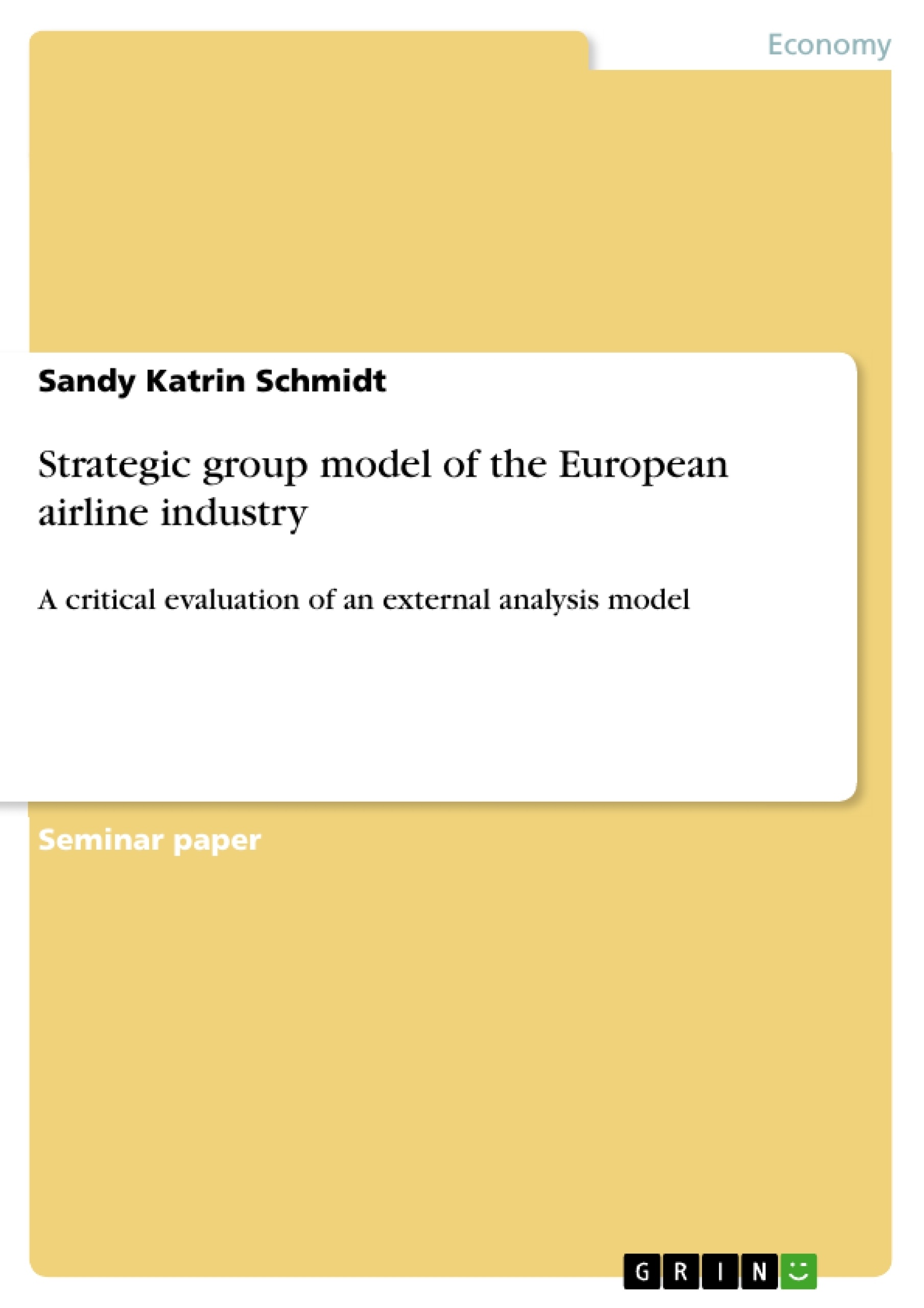This paper aims to investigate in the limitations and benefits of the strategic group model in relation to the appliance of the model to the European airline industry. Therefore, the first part will shortly summarize the model including issues concerning the appliance as well as advantages. The second part will than have a short look at current trends and factors driving the industry. This will be followed by the appliance of the model to the chosen industry while plotting the 22 investigated enterprises within strategic group maps each showing the interrelation of two chosen criteria. Finally, the model will be critical evaluated concluding in giving evidences about the overall value of the model.
Inhaltsverzeichnis (Table of Contents)
- Introduction
- External analysis with the strategic group model
- Application
- Advantages
- The European Airline Industry
- Appliance of the Model to the European Airline Industry
- Vertical integration in interrelation with geographical scope
- Product range in interrelation with geographical scope
- Service quality in interrelation with organization size measured in fleet size
- Critical appraisal
- Direct critique drawn from the application of the model to the industry
- Additional critique drawn from literature review
- Conclusion
Zielsetzung und Themenschwerpunkte (Objectives and Key Themes)
This paper aims to investigate the limitations and benefits of the strategic group model in relation to its application to the European airline industry. The paper will discuss the model's application, advantages, and critique. Additionally, the paper will analyze current trends and factors driving the airline industry and apply the strategic group model to the European airline industry.
- Strategic group model application and limitations
- Current trends and factors in the European airline industry
- Strategic group mapping of European airlines
- Critical evaluation of the strategic group model
- The European airline industry's competitive landscape
Zusammenfassung der Kapitel (Chapter Summaries)
The introduction provides an overview of the paper's objectives, focusing on the investigation of the strategic group model's limitations and benefits in the context of the European airline industry. Chapter 2 delves into the strategic group model, outlining its application and advantages. This chapter also explores the model's use in identifying potential opportunities and threats for organizations. Chapter 3 presents an overview of the European airline industry, highlighting its growth, deregulation, and the rise of low-cost carriers.
Chapter 4 applies the strategic group model to the European airline industry, focusing on key strategic dimensions such as vertical integration, product range, and service quality. It examines the interrelationship of these dimensions with geographical scope and organizational size. Chapter 5 provides a critical appraisal of the strategic group model, discussing both direct and indirect critiques based on the model's application to the airline industry and literature review. This chapter explores the model's strengths and weaknesses and considers its overall value in strategic analysis.
Schlüsselwörter (Keywords)
The paper focuses on the strategic group model, its application to the European airline industry, and its limitations and benefits. Key themes include external analysis, strategic analysis, competitive advantage, industry dynamics, deregulation, low-cost carriers, strategic groups, mobility barriers, vertical integration, product range, service quality, and geographical scope. This paper explores the value of the strategic group model in understanding the European airline industry's competitive landscape and identifying strategic opportunities and threats.
- Quote paper
- Sandy Katrin Schmidt (Author), 2008, Strategic group model of the European airline industry, Munich, GRIN Verlag, https://www.grin.com/document/89843



